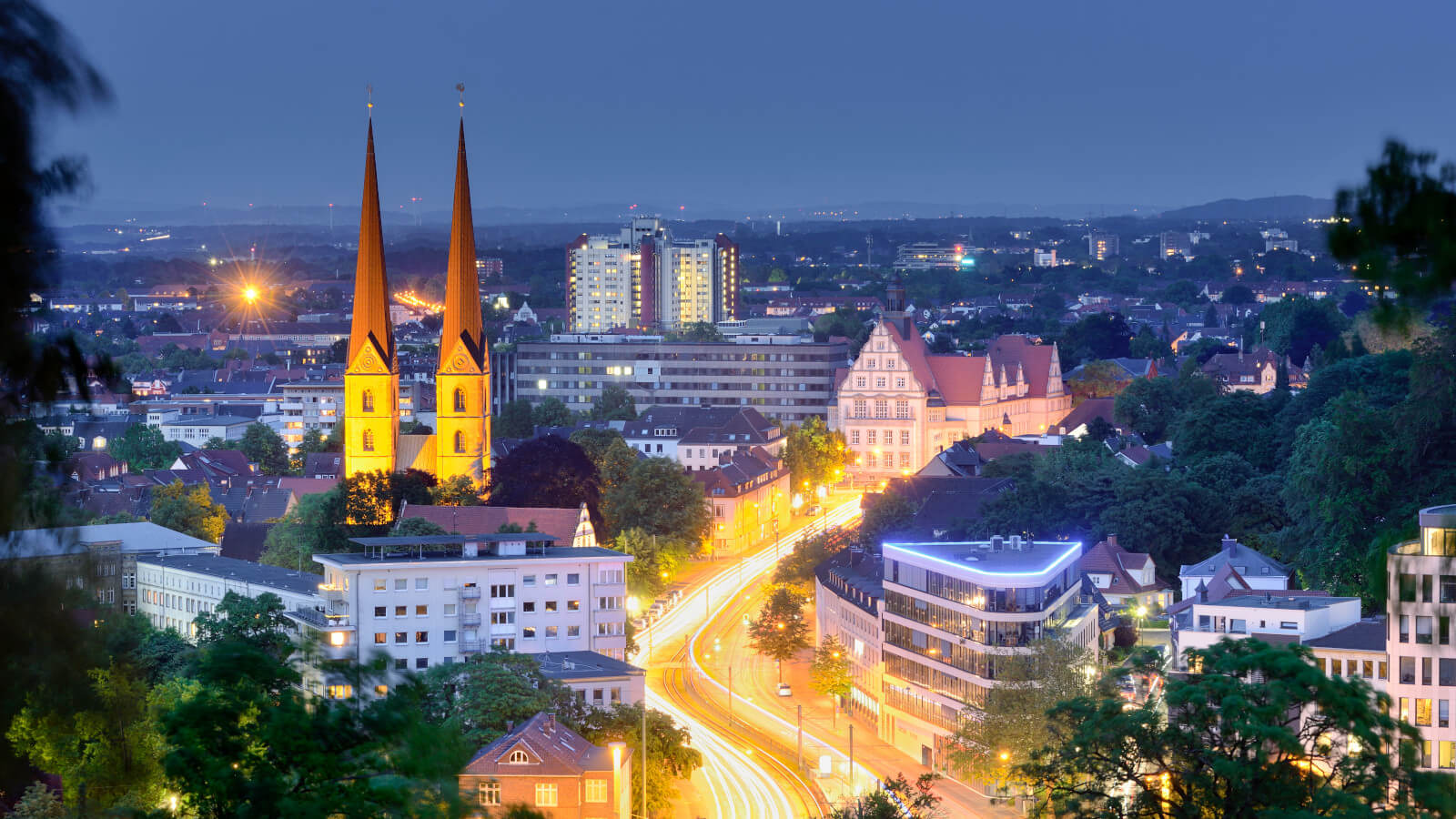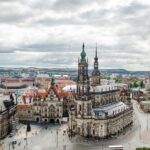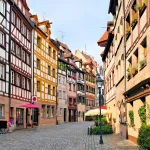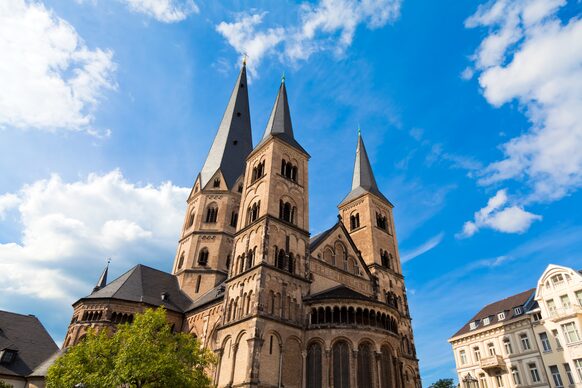The region of Ostwestfalen-Lippe, where Bielefeld is situated, is renowned for its high-tech industry and is home to a number of multinational corporations. One company that is probably well-known to most people is Dr. Oetker, which was founded in Bielefeld and has a museum dedicated to its brand. Bielefeld still offers a lot to discover despite not being included in many tourist publications. On the first crest of the Tutoburg Forest sits Sparrenburg, a dreadful fortress with underground passageways and a keep to explore in the summer.
1. Sparrenburg

The most notable historical structure in Bielefeld is a castle that towers over the southern part of the city from Sparrenberg Hill. The enormous Tutoburg Forest, which stretches for kilometres to the west and south of the city, has its easternmost point at the castle. Any time of year, you can climb up to enjoy the views from the walls.
2. Kunsthalle Bielefeld

Image Source: https://www.owl-journal.de/wp-content/uploads/2019/01/KH-BI-Bilder-einer-Sammlung-060-0209.jpg
The city’s fine arts museum is housed in a structure created in the 1960s by renowned American architect Philip Johnson, and it features galleries for modern and contemporary art. Additionally, there are works by Max Beckmann and Pablo Picasso, as well as a sculpture garden with pieces by Henry Moore, Rodin, and Olafur Eliasson.
3. Altes Rathaus (Old Town Hall)

The mayor of Bielefeld works out of the ancient town hall on Rathausplatz, but the rest of the municipal government has been relocated to the contemporary addition, known as the Neues Rathaus, which was constructed in the 1980s. Get a good look at the main gable from the front, where the city’s coat of arms is displayed over a loggia and clock.
4. Stadttheater

Image Source: https://www.lindner-group.com/fileadmin/user_upload/internet/referenzen/referenz_img_de_theaterbielefeld_04.jpg
The Stadttheater is an Art Nouveau opera building with sombre Baroque elements that is situated next to the Altes Rathaus and was constructed about the same period. The largest theatre in East-Westphalia, the structure underwent a renovation in 2006 to meet up with worldwide opera standards.
5. Dr. Oetker Welt
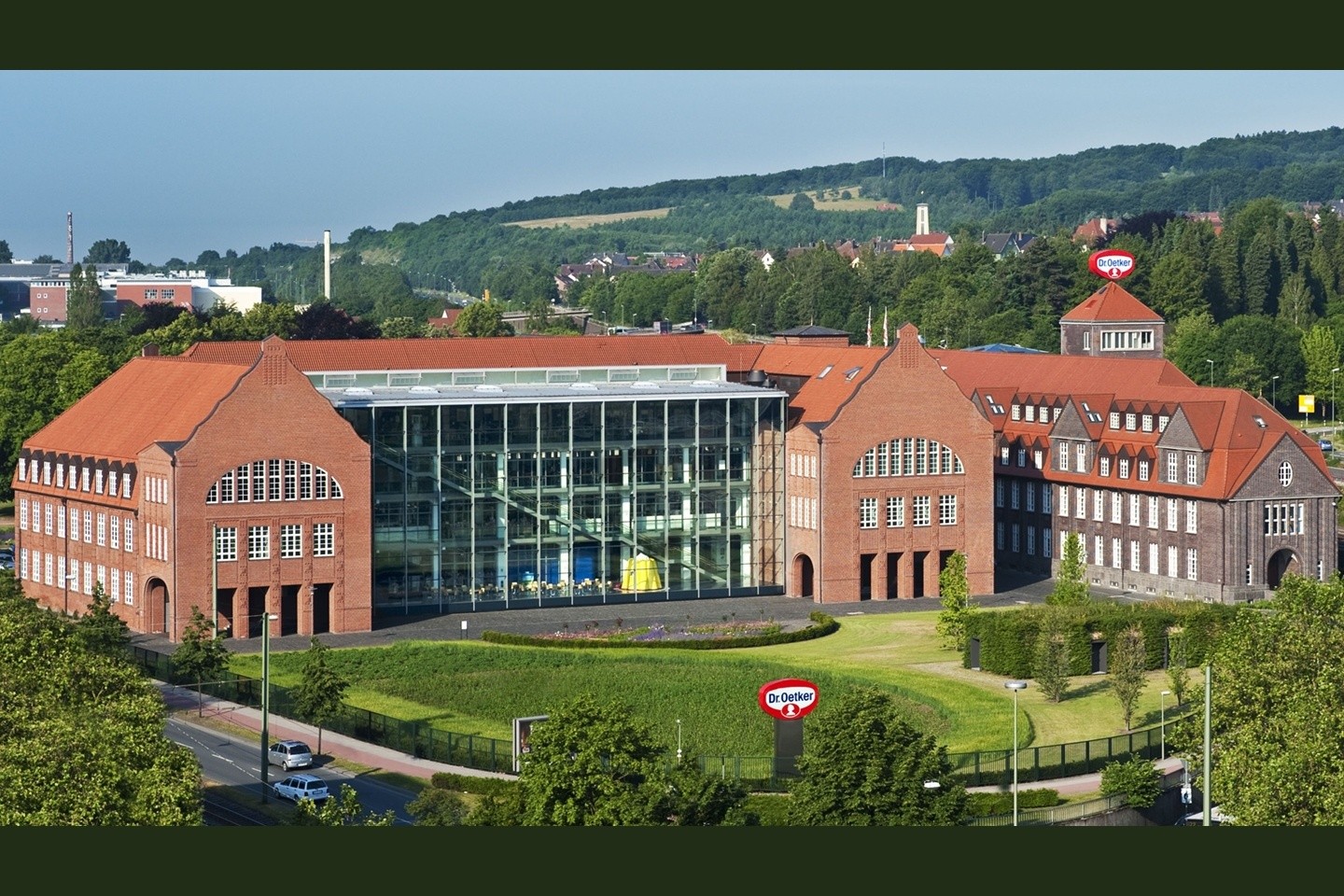
Image Source: https://www.bielefeld-app.de/media/processed/droetkerwelt_slider01.jpg
Dr. Oetker, a multinational food processing firm, is based in Bielefeld. A raising agent that people could use for home baking was created by the original Dr. Oetker towards the end of the 19th century, and that is when everything started. The Dr. Oetker testing kitchen, where new recipes are created behind a glass screen so that guests may witness, is located on the first level. Vintage service trucks and other archival oddities may be seen on the upper level.
6. Ravensberger Spinnerei
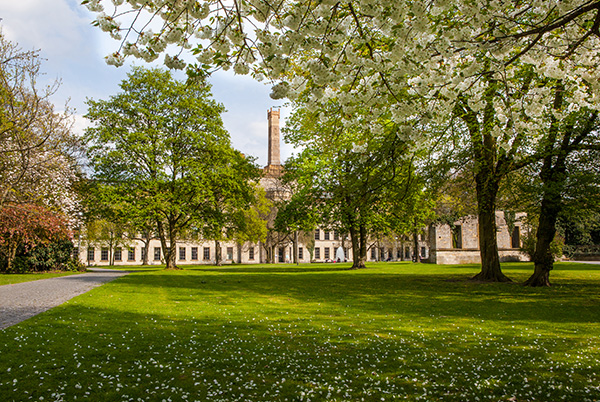
Image Source: https://www.ravensberger-park.de/img/ravensberger-spinnerei.jpg
The Ravensberger Spinnerei in the Mitte neighbourhood formerly boasted 20,000 spinning wheels at its peak, making it the biggest flax mill in all of Europe. Among the textiles made here were tablecloths, shirts, and bed linen. However, the mill has been transformed into a sizable cultural complex that includes a performing arts centre, the Bielefeld Historical Museum, the Huelsmann Art Museum, housed in the elegant manager’s villa, a movie theatre, and a restaurant in the former carding house.
7. Heimat-Tierpark Olderdissen

The Heimat-Tierpark Olderdissen, a zoo for European animals, is a popular family outing in the Teutoburg Forest. There are Alpine marmots, brown bears, beavers, wild boars, lynxes, wild cats, highland cattle, mouflons, bison, and chamois in the outdoor enclosures, which are set up to current husbandry standards.
8. Alter Markt

Where the city’s market operated until 1903 is perhaps the most scenic location in central Bielefeld. A little plaza is surrounded by carefully preserved Burgher-era Renaissance gabled homes. The Late Gothic Crüwell-Haus, built in 1530, is the most beautiful of them all and one of the city’s icons. You may enter the lobby of this building on Piggenstraße, which features a staircase covered with over 7,000 Delft tiles depicting historical events from Bielefeld.
9. Altstädter Nicolaikirche
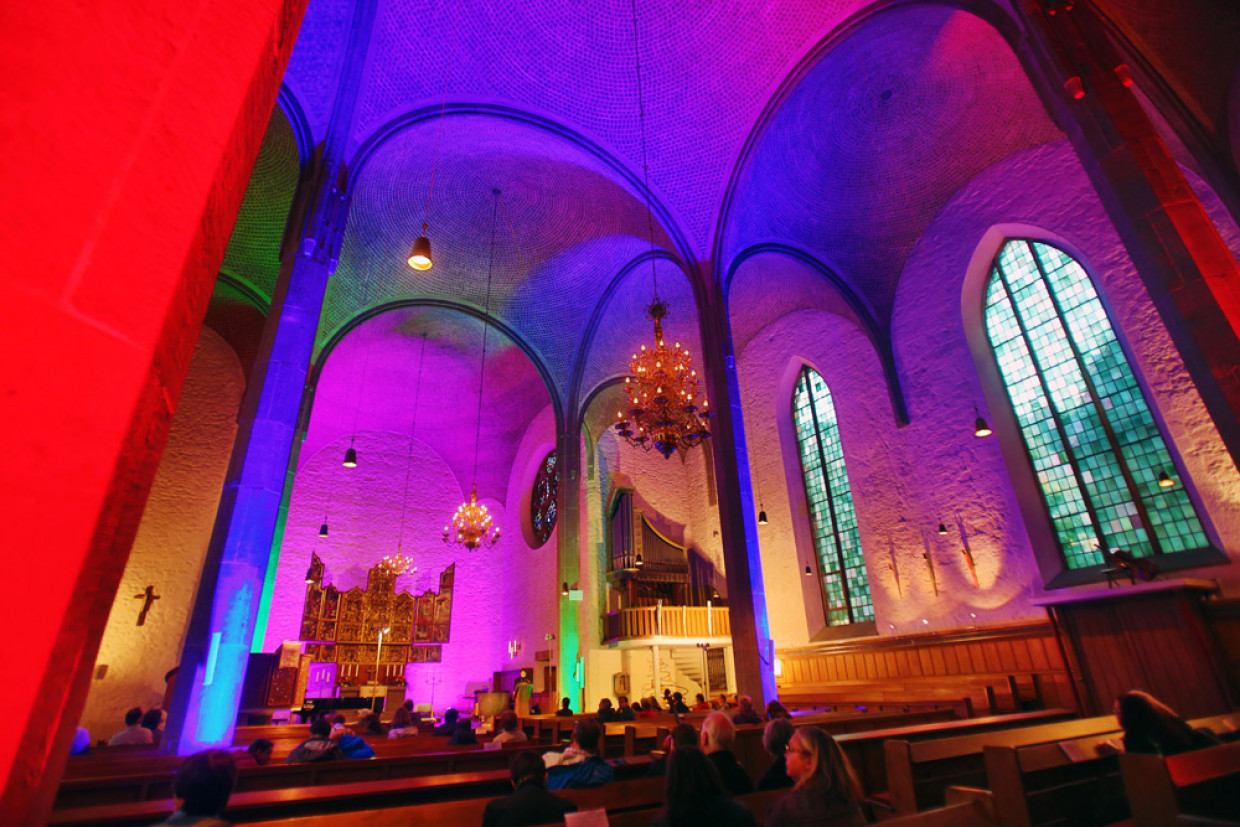
Image Source: https://www.bielefeld.jetzt/sites/default/files/styles/large/public/bilder/tipps/altstaedter-nikolaikirche.jpg?itok=a4v_OjPt
The oldest municipal church in Bielefeld is located next to the Alter Markt. The Altstädter Nicolaikirche, which was built 100 years earlier, received its current Gothic style in the 14th century. The priceless Schnitzaltar, created in 1524 by Antwerp’s Guild of Saint Luke, is a must-see item within. There are 250 tiny carved figurines in the panels of this incredibly complex altarpiece that represent scenes from the bible.
10. Botanischer Garten
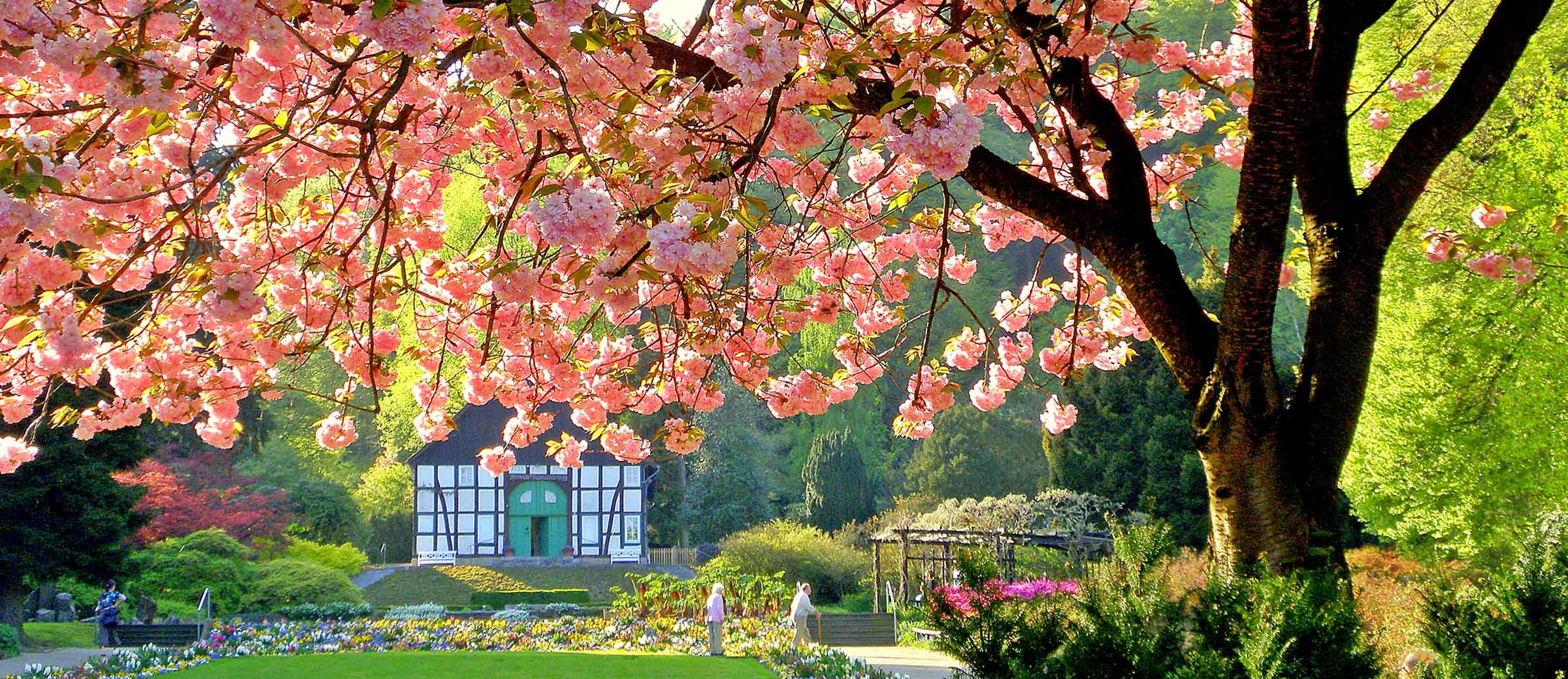
Image Source: https://www.botanischer-garten-bielefeld.de/wp-content/themes/classic/img/botanische_garten_bielefeld_kirschbluetten.jpg
On the Kahlenberg hill to the southwest of the centre, the Botanischer Garten celebrated its centenary in 2012. The park has lots to delight horticulture enthusiasts, but for everyone else is a great pick for a calming stroll.
11. Neustädter Marienkirche
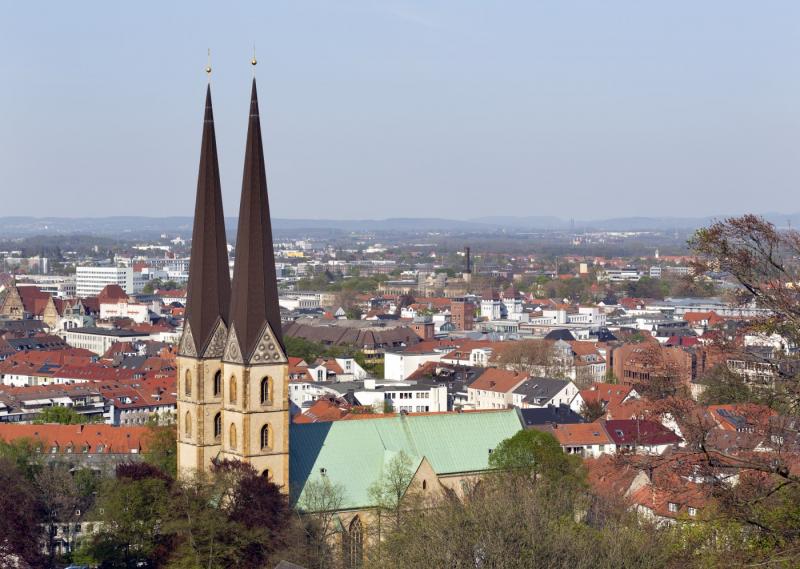
Image Source: https://www.baukunst-nrw.de/img/objekte/L/2267_87808_Neustaedter_Marienkirche_Bielefeld_klein.jpg
This 13th-century church and its pair of towers is one of the defining elements of the Bielefeld cityscape. There’s another stunning altar at this church, the Marienaltar, which is a Gothic triptych of 30 small scenes around a central painting of Mary with Child, all dating to the end of the 14th century.
12. Kesselbrink

Image Source: https://cdn-rabi.amstools.de/fileadmin/upload/_processed_/c/7/csm_Kesselbrink2013_Bild_Bielefeld_Marketing_GmbH_cd813de497.jpg
The largest square in Bielefeld is to the northeast of the Innenstadt, and for most of the city’s history was a parade ground on the edge of countryside. There are ample lawns, a large fountain, and the square is at its most vibrant on market days, which fall on Tuesdays, Thursdays and Saturdays.
13. St. Jodokus
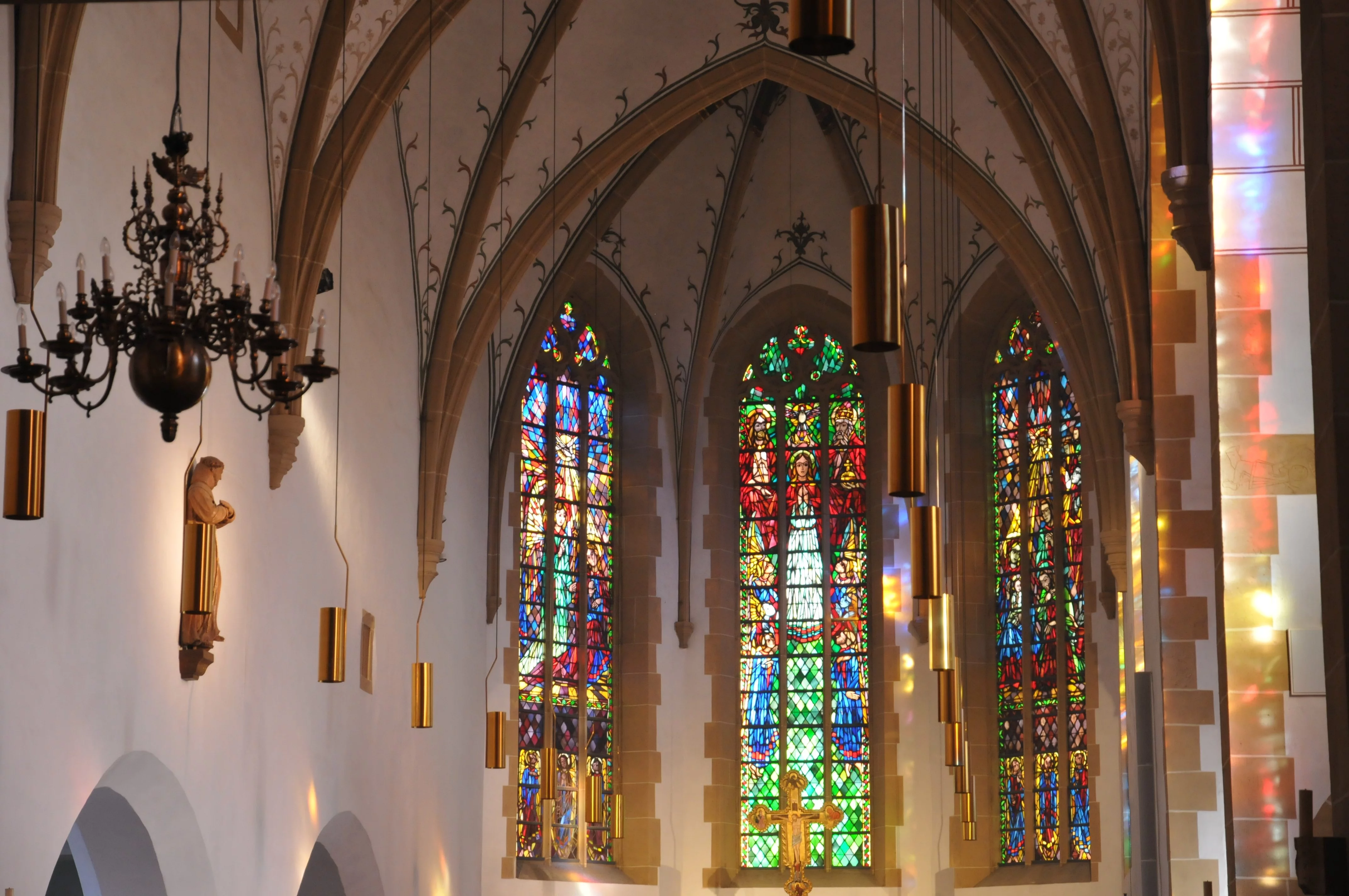
Image Source: https://katholisch-bielefeld.de/wp-content/uploads/2018/07/DSC_2077.jpg.webp
The Black Madonna, a 1220 Romanesque depiction of Mary with Child, is said to be the oldest piece of art in Bielefeld and is on display at the church. The church’s shrine, which was carved in the early 1500s, around the time the monastery was dedicated, and which has polychrome statues of Mary and St. Michael, is also significant.
14. Museum Wäschefabrik

Image Source: https://www.erih.de/fileadmin/Mediendatenbank/Photos/2_I_WANT_TO_GO_THERE/Standorte/B/Bielefeld_Museum_Waeschefabrik.jpg
An old bed and tablecloth factory on Viktoriastraße has a time capsule of 20th-century industrial history. The oldest machine on display is more than a century old since the first sewing machines were constructed to last and were frequently mended rather than replaced. Everything remained in place when the plant shut down.
15. Christmas Market
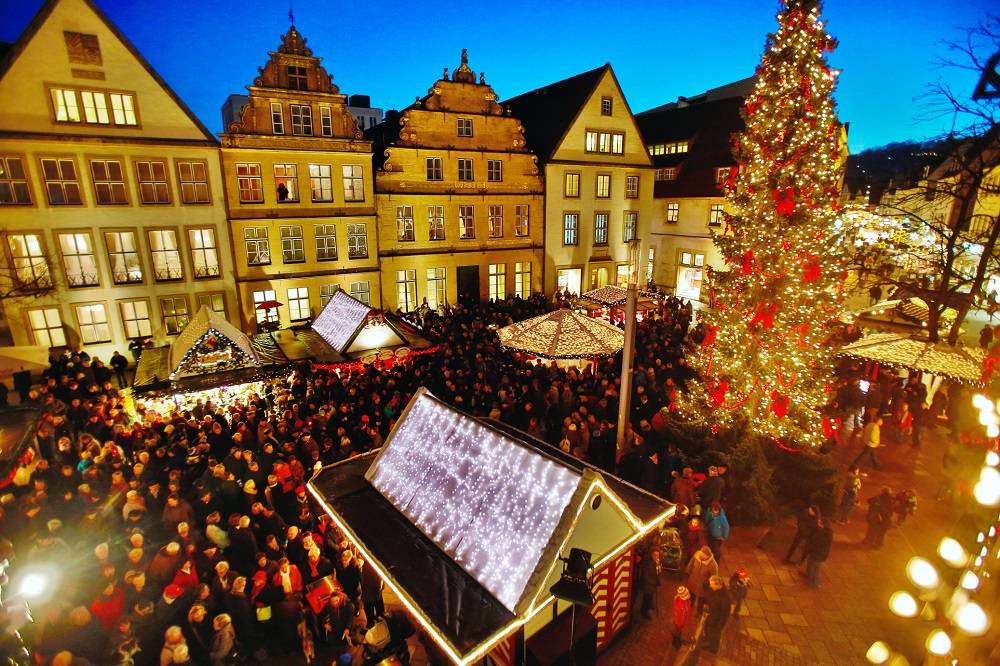
Image Source: https://www.doatrip.de/images/pictures/deutschland/bielefeld_weihnachtsmarktbielefeld/1479061917_4699.jpg
Beginning on November 21, Bielefeld’s Christmas Market engulfs the Innenstadt’s pedestrian-only streets and squares. Under a stunning canopy of lights, Jahnplatz is overrun with dozens of little red huts, and the city tree is situated at the Alter Markt’s iconic location in the centre of yet another row of vendors.
Places and Things To Do

